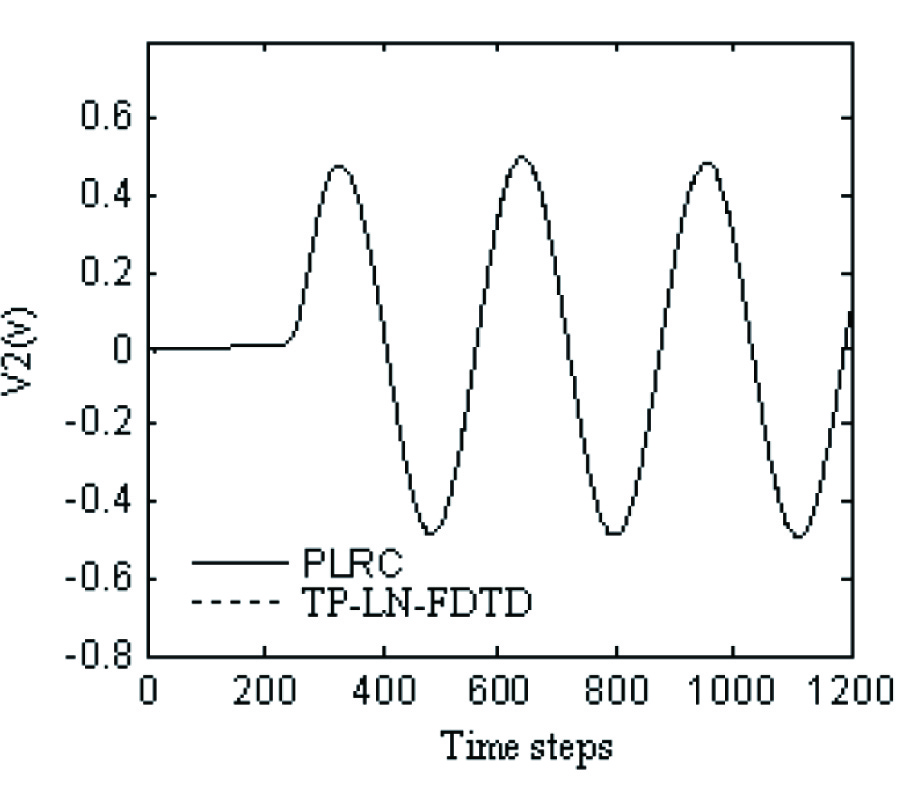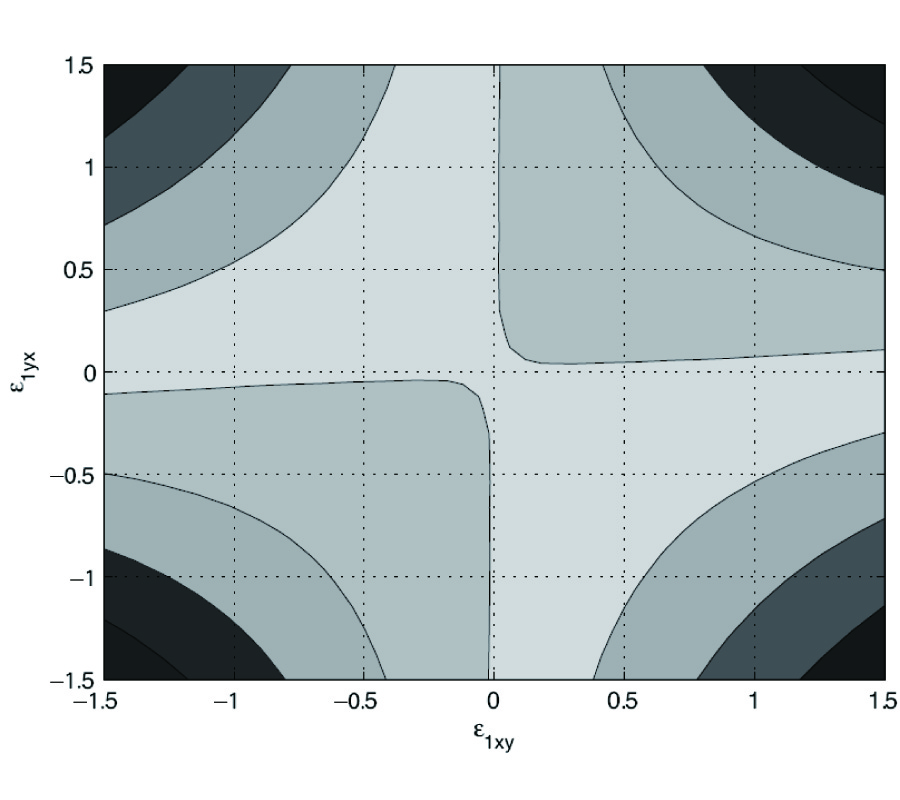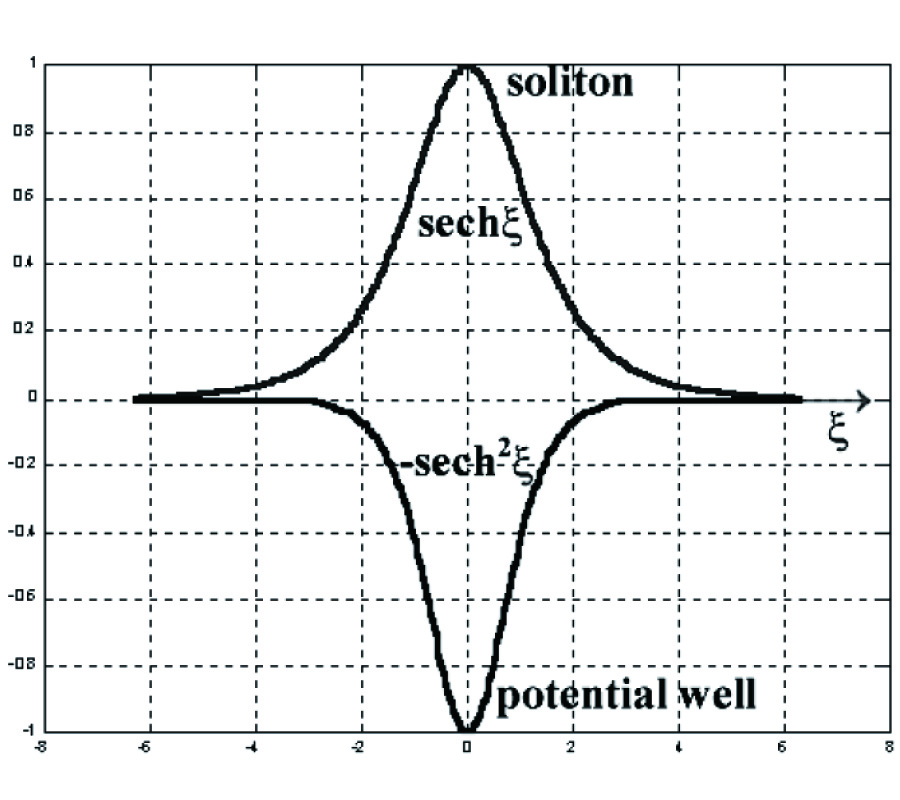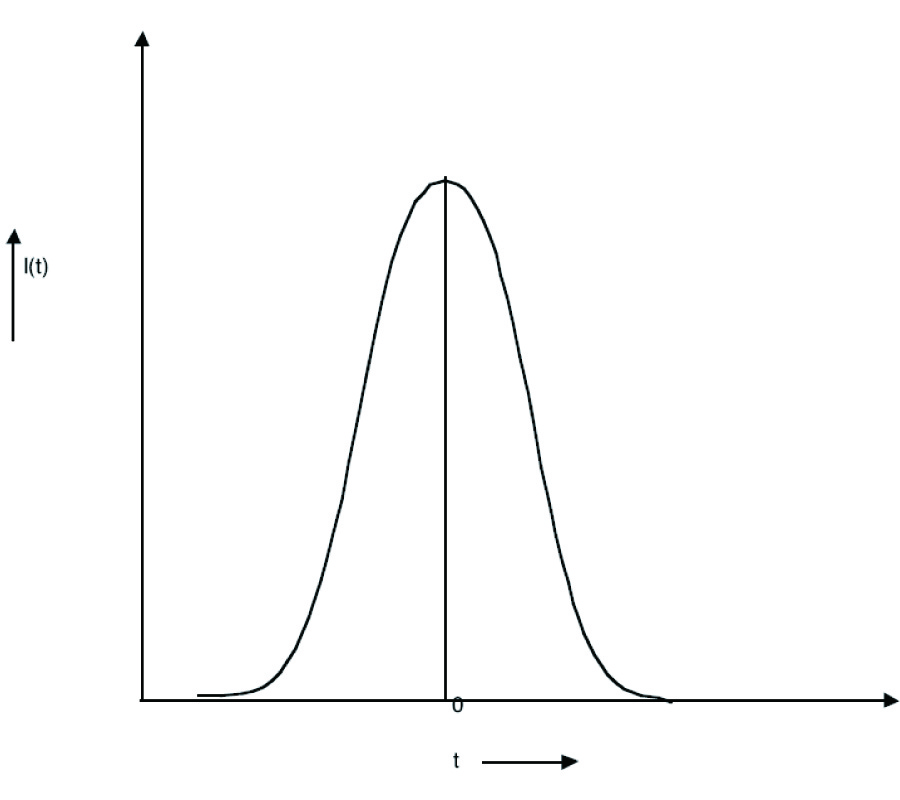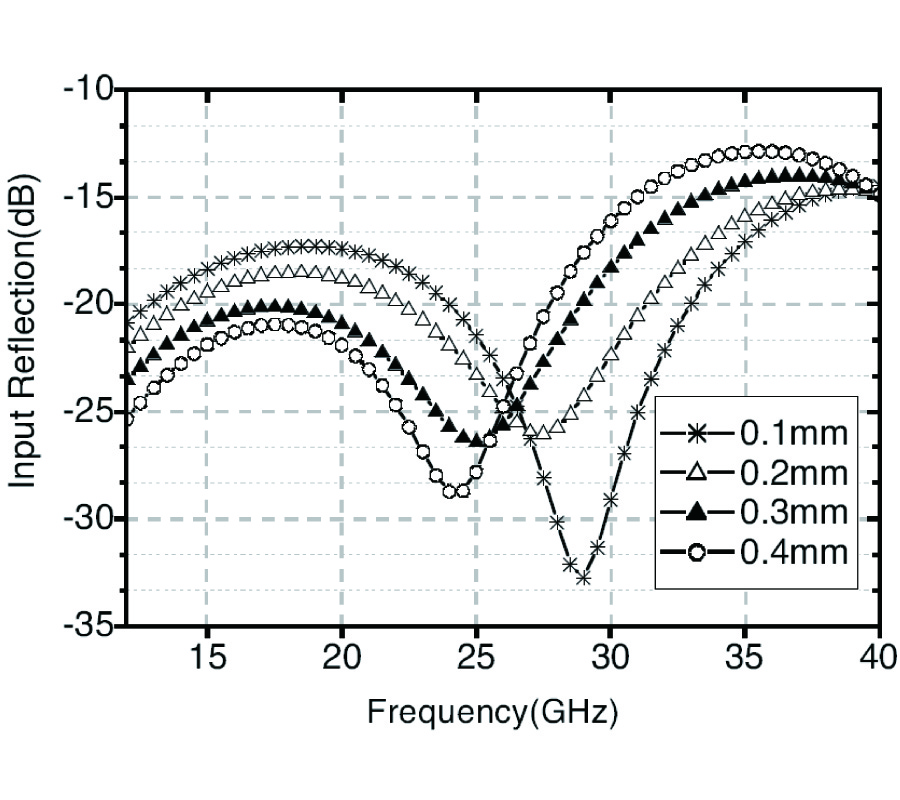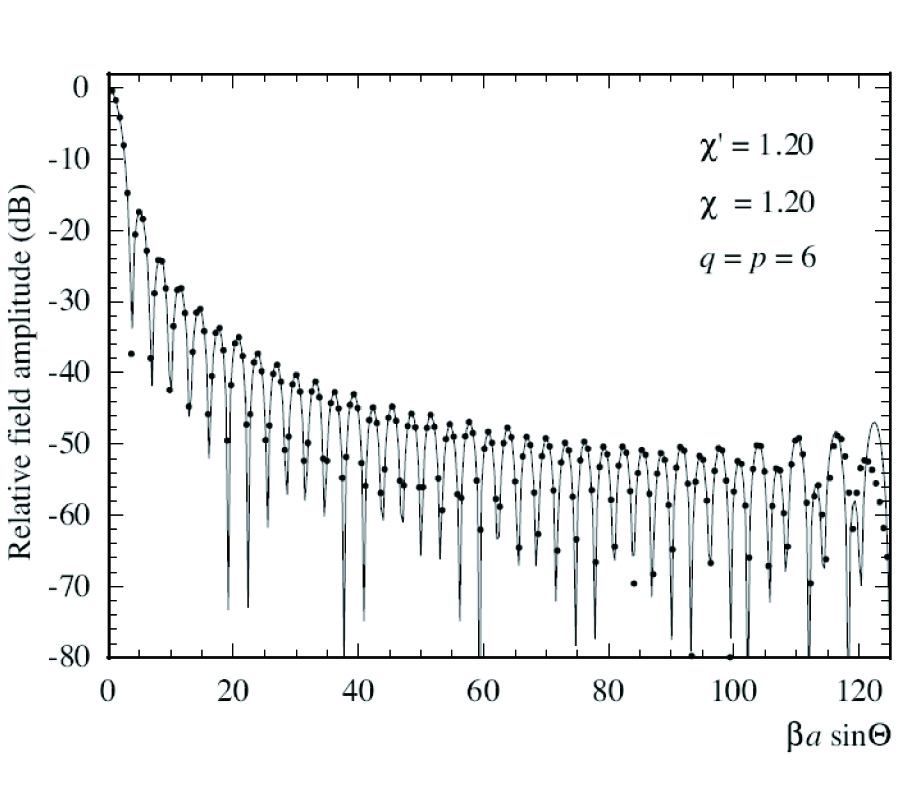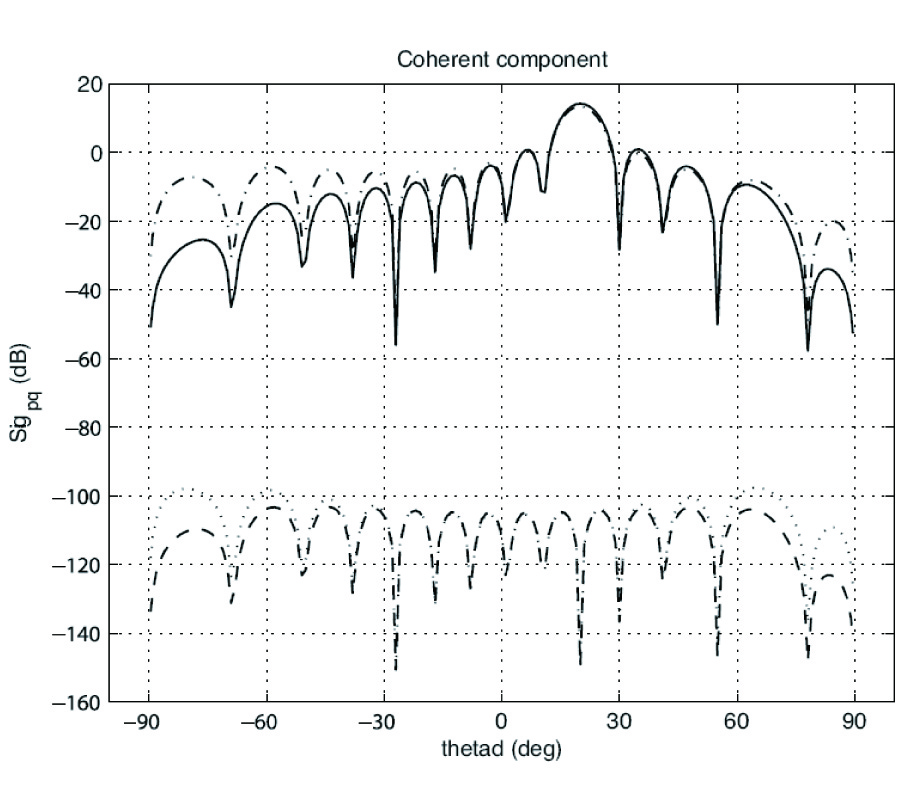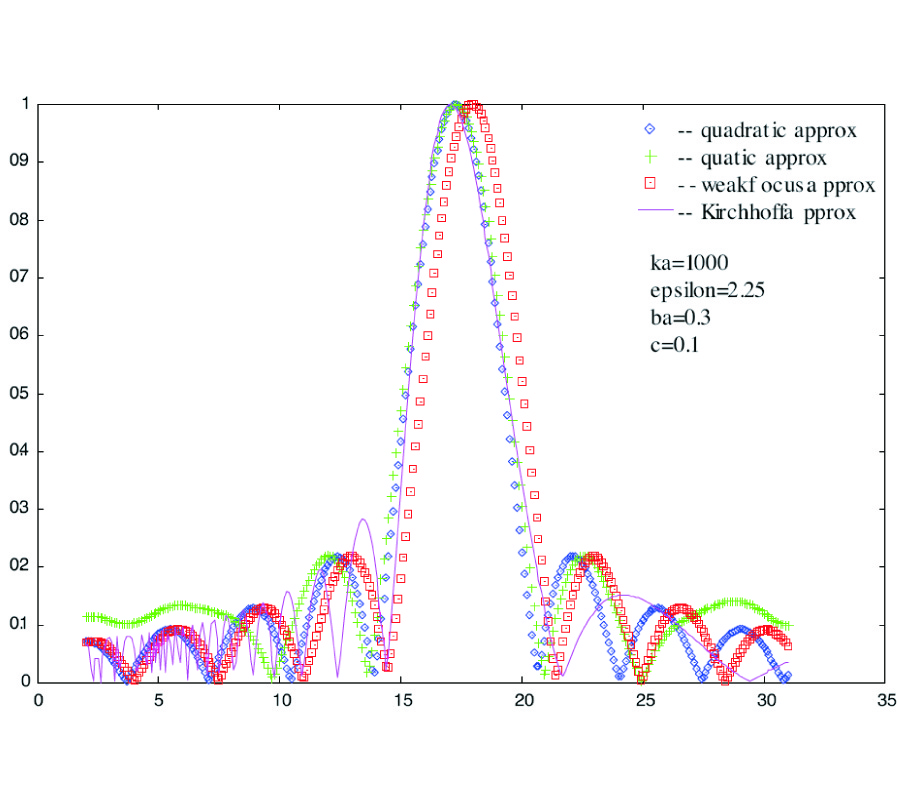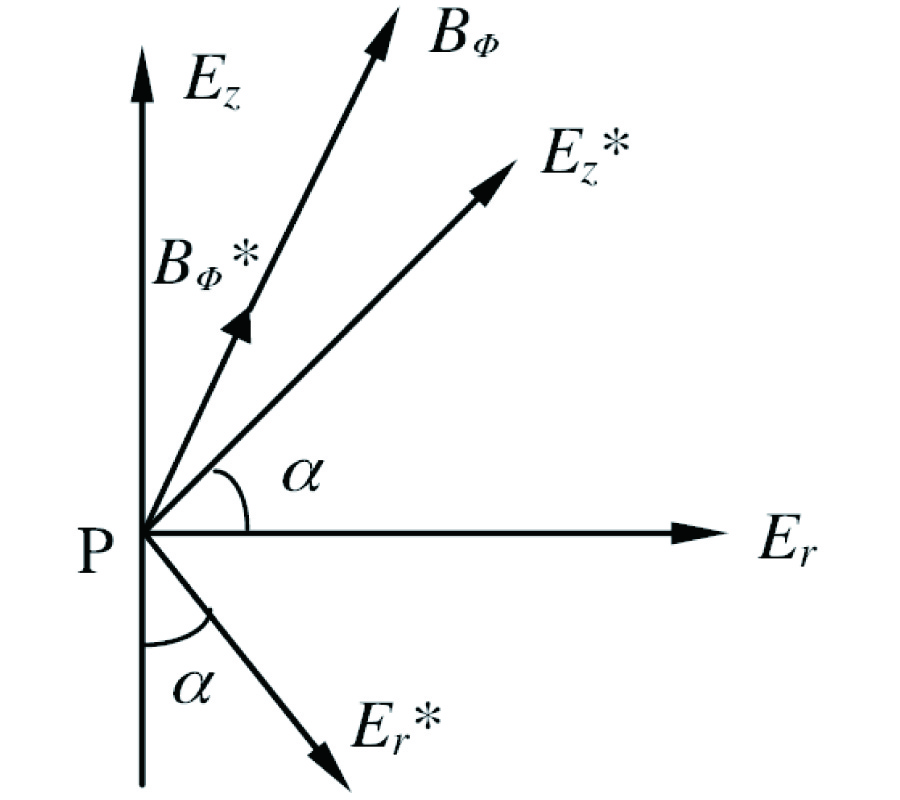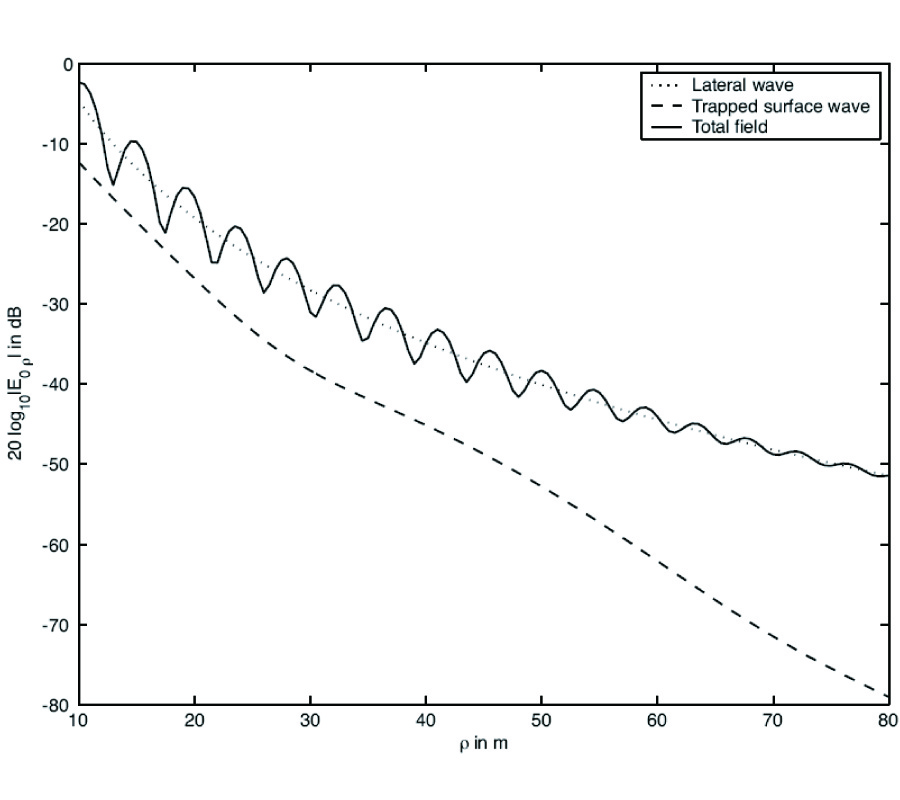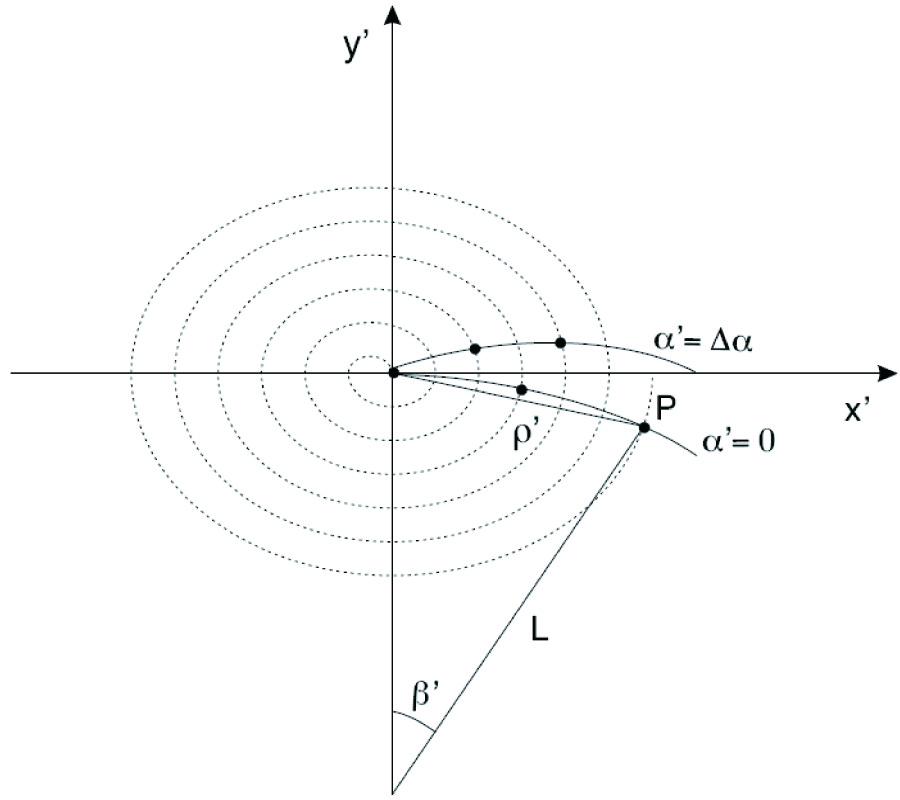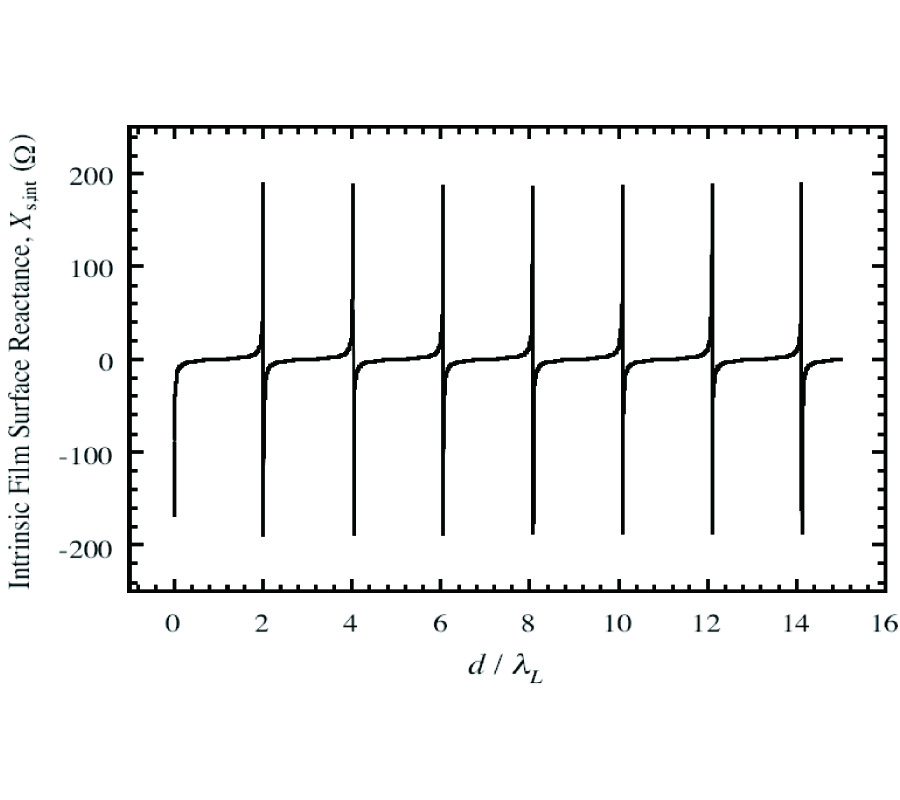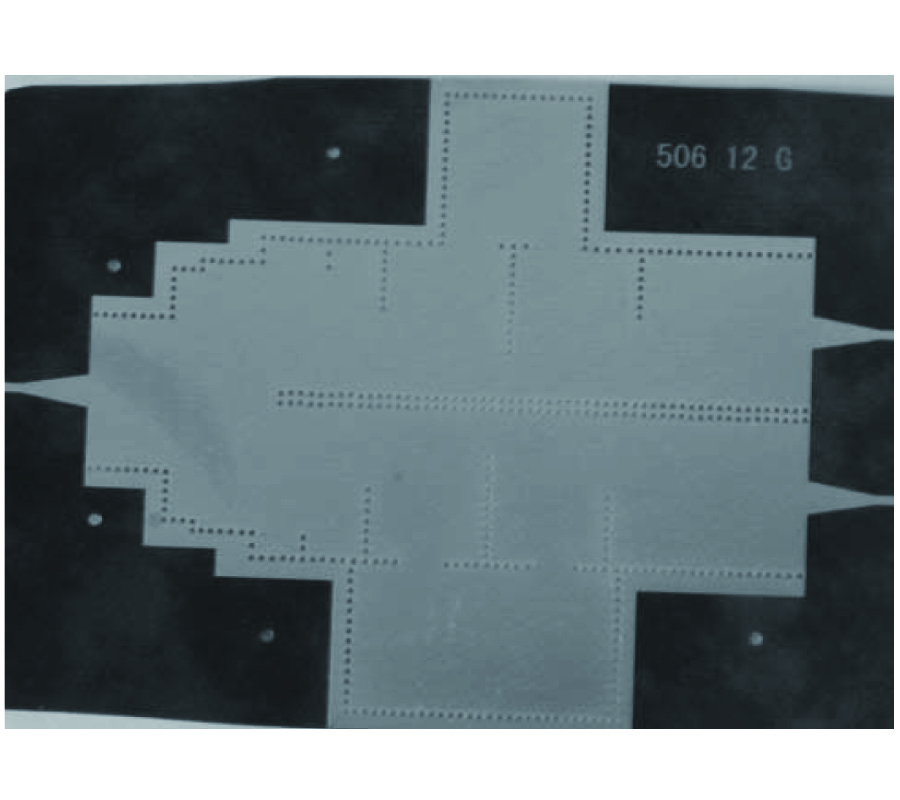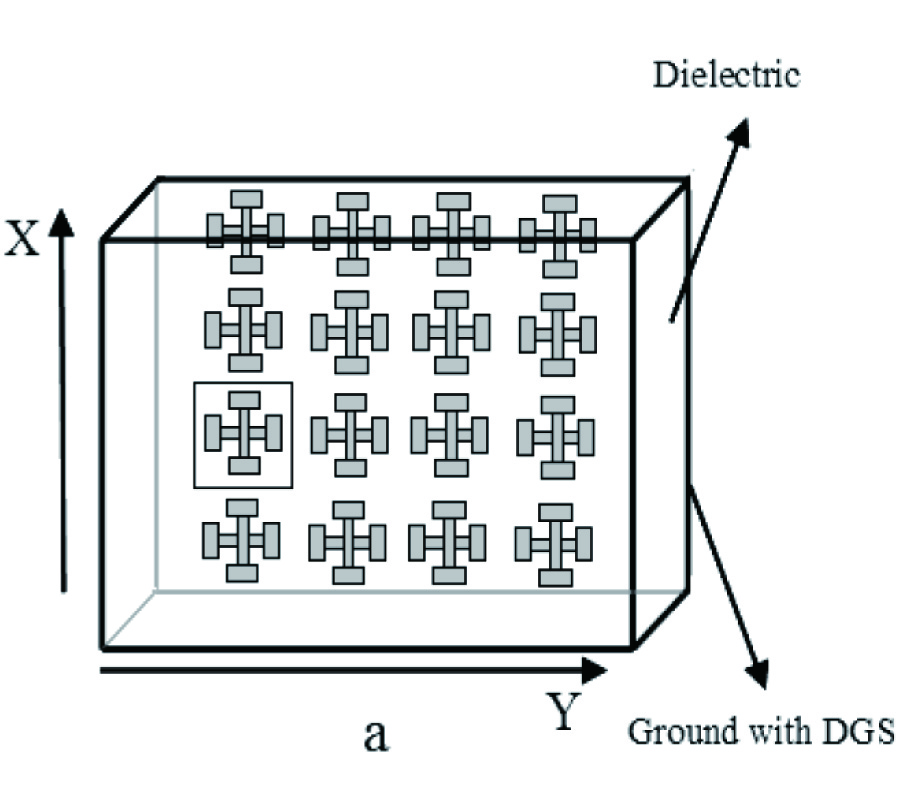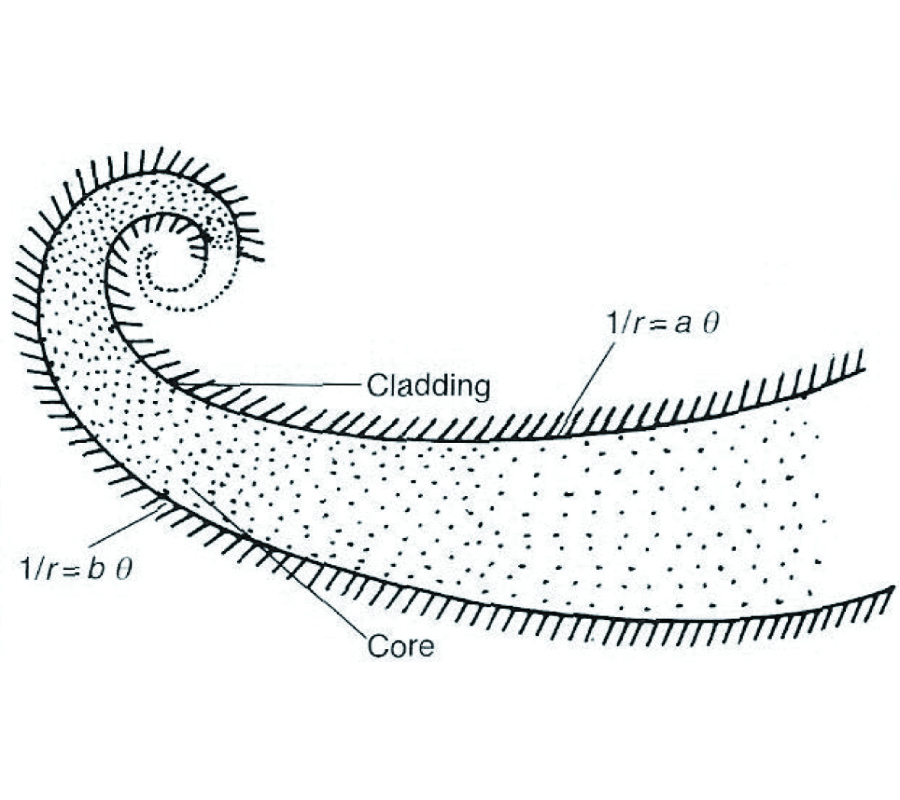Electromagnetic Field from a Horizontal Electric Dipole on the Surface of a High Lossy Dielectric Coated with a Uniaxial Layer
Jian Mei and
Kai Li
In this paper, the explicit formulas are derived for the six components of the electromagnetic field in air excited by a horizontal electric dipole over a planar high lossy dielectric coated with an anisotropic uniaxial layer. Similar to the case of the three-layered region consisting of air, a uniaxial layer,and a perfect conductor, the total field consists of the direct field,the ideal reflected field or the field of an ideal image, the lateral-wave field,and the trappedsurface- wave field. It should be pointed out that the trapped surface wave can be separated into the trapped wave of electric type and magnetic type. The wave numbers in the ρ̂ direction of electric-type trapped surface wave, which are between k0 and kL, are different from those of the magnetic-type trapped surface wave, which are between k0 and kL . When the thickness l of the uniaxial layer satisfies nπ < kT/kL (k2L - k20)1/2 · l < (n + 1)π, there are n + 1 modes of the electric-type trapped surface waves. When the thickness l satisfies (n − 1/2)π < (k2T −k20)1/2 · l < (n + 1/2)π, there are n modes of magnetictype trapped waves.
